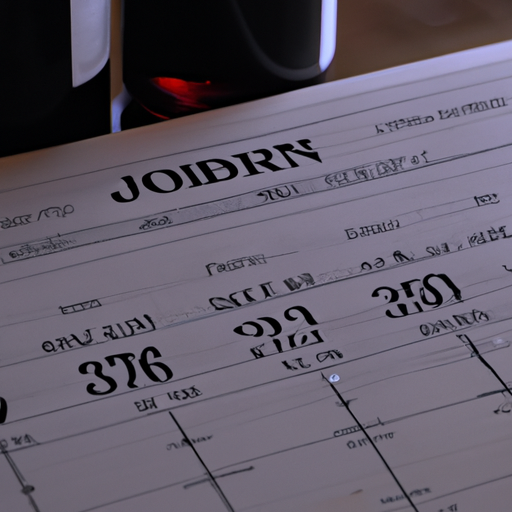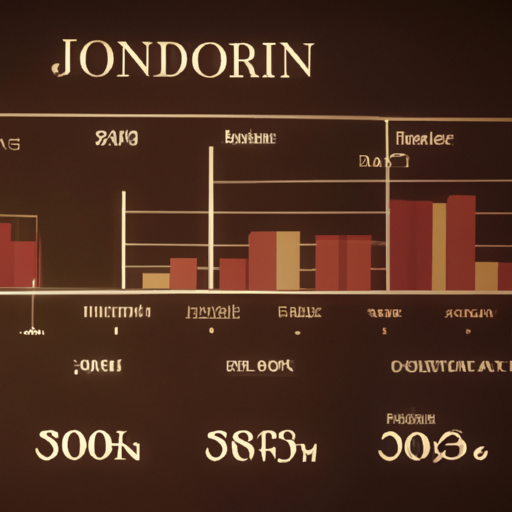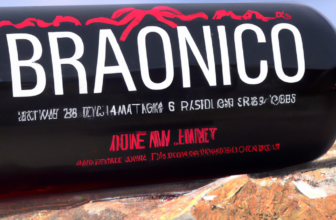
The History and Origins of Jordan Cabernet Sauvignon
Jordan Cabernet Sauvignon is a renowned wine that has gained popularity among wine enthusiasts around the world. Known for its exceptional quality and aging potential, this wine has a rich history and fascinating origins that contribute to its unique character.
The story of Jordan Cabernet Sauvignon begins in the picturesque Alexander Valley in Sonoma County, California. The winery was established in 1972 by Tom and Sally Jordan, who had a vision of producing world-class wines that would rival the best from Bordeaux. With this goal in mind, they set out to create a wine that would showcase the unique terroir of the region.
The Alexander Valley, with its diverse microclimates and well-drained soils, proved to be the perfect location for growing Cabernet Sauvignon grapes. The cool nights and warm days allow the grapes to ripen slowly, developing complex flavors and balanced acidity. The winemakers at Jordan carefully select the best grapes from their estate vineyards, ensuring that only the highest quality fruit is used in the production of their wines.
The winemaking process at Jordan is a meticulous one, with every step taken to preserve the integrity of the grapes and capture the essence of the vintage. After the grapes are harvested, they are sorted by hand to remove any imperfections. The grapes are then gently crushed and fermented in stainless steel tanks, allowing the natural flavors and aromas to shine through.
Once fermentation is complete, the wine is aged in French oak barrels for up to two years. This extended aging process allows the wine to develop complexity and depth, while also softening the tannins. The result is a wine that is elegant and refined, with a perfect balance of fruit, acidity, and oak.
One of the most remarkable aspects of Jordan Cabernet Sauvignon is its aging potential. While many wines are best enjoyed within a few years of release, Jordan Cabernet Sauvignon can be cellared for decades, allowing it to evolve and improve over time. The wine’s structure and balance ensure that it will continue to develop and mature, revealing new layers of flavor and complexity with each passing year.
To help wine enthusiasts determine the optimal time to enjoy their bottle of Jordan Cabernet Sauvignon, the winery has created a wine vintage chart. This chart provides a guide to the aging potential of each vintage, allowing consumers to make informed decisions about when to open their bottle. The chart takes into account factors such as the weather conditions during the growing season, the quality of the grapes, and the winemaking techniques used.
In conclusion, Jordan Cabernet Sauvignon is a wine with a rich history and fascinating origins. Its exceptional quality and aging potential have made it a favorite among wine enthusiasts worldwide. The winemaking process at Jordan, combined with the unique terroir of the Alexander Valley, results in a wine that is elegant, refined, and capable of aging for decades. Whether enjoyed now or cellared for the future, Jordan Cabernet Sauvignon is sure to delight the senses and provide a memorable wine experience.
Understanding the Aging Process of Jordan Cabernet Sauvignon

Guide to Aging Jordan Cabernet Sauvignon: Wine Vintage Chart
Understanding the Aging Process of Jordan Cabernet Sauvignon
When it comes to aging wine, few varietals have the potential to develop as beautifully as Cabernet Sauvignon. And when it comes to Cabernet Sauvignon, Jordan Winery in Sonoma County, California, is renowned for producing exceptional vintages that can age gracefully for decades. In this guide, we will explore the aging process of Jordan Cabernet Sauvignon and provide you with a wine vintage chart to help you determine the optimal time to enjoy each bottle.
To truly appreciate the aging potential of Jordan Cabernet Sauvignon, it is important to understand the factors that contribute to its longevity. First and foremost, the quality of the grapes is paramount. Jordan Winery carefully selects only the finest fruit from their estate vineyards, ensuring that each vintage has the potential to age well. Additionally, the winemaking process at Jordan involves gentle handling of the grapes, minimal intervention, and the use of French oak barrels, all of which contribute to the wine’s ability to develop complexity and depth over time.
The aging process of Jordan Cabernet Sauvignon begins in the cellar, where the wine is aged in oak barrels for up to two years. During this time, the wine undergoes a slow and gradual transformation, as it absorbs flavors from the oak and develops its own unique characteristics. After barrel aging, the wine is bottled and allowed to rest in the cellar for an additional year before release. This extended aging period allows the wine to further integrate and develop, resulting in a more harmonious and balanced final product.
Now, let’s delve into the wine vintage chart for Jordan Cabernet Sauvignon. This chart provides a general guideline for the optimal drinking window for each vintage, taking into account the wine’s aging potential and the characteristics it is likely to exhibit at different stages of its development.
Starting with the most recent vintages, the chart indicates that Jordan Cabernet Sauvignon from 2016 and 2017 is best enjoyed in its youth, as these wines are still vibrant and fruit-forward. Moving back in time, the 2014 and 2015 vintages are entering their prime drinking window, with the tannins softening and the flavors becoming more complex. For those who prefer a more mature wine, the 2012 and 2013 vintages are showing beautifully now, with the fruit flavors giving way to secondary aromas of tobacco, leather, and dried herbs.
For those fortunate enough to have older vintages in their cellar, the chart indicates that Jordan Cabernet Sauvignon from 2009 to 2011 is currently at its peak, offering a perfect balance of fruit, tannins, and tertiary flavors. And for those seeking a truly special experience, the 2005 to 2008 vintages are considered to be in their prime drinking window, showcasing the full potential of aged Jordan Cabernet Sauvignon.
In conclusion, understanding the aging process of Jordan Cabernet Sauvignon is key to enjoying these exceptional wines at their best. With careful grape selection, gentle winemaking techniques, and extended aging in oak barrels and bottle, Jordan produces vintages that can age gracefully for decades. By consulting the wine vintage chart, you can determine the optimal time to enjoy each bottle, ensuring that you experience the full spectrum of flavors and aromas that these wines have to offer. So, whether you choose to enjoy Jordan Cabernet Sauvignon in its youth or after years of aging, you can be confident that you are savoring a wine of exceptional quality and craftsmanship.
Exploring the Flavor Profiles of Aged Jordan Cabernet Sauvignon
Aging wine is a practice that has been around for centuries. It is a process that allows the flavors and aromas of the wine to develop and evolve over time. One wine that is particularly well-suited for aging is Jordan Cabernet Sauvignon. This wine, produced in the Alexander Valley region of California, is known for its rich and complex flavors. In this article, we will explore the flavor profiles of aged Jordan Cabernet Sauvignon and provide a guide to aging this wine.
When it comes to aging Jordan Cabernet Sauvignon, there are a few key factors to consider. First and foremost is the vintage of the wine. The vintage refers to the year in which the grapes were harvested and the wine was made. Different vintages can have a significant impact on the flavor profile of the wine. Some vintages may be more suitable for aging, while others may be best enjoyed in their youth.
To help guide you in your aging journey, we have created a wine vintage chart specifically for Jordan Cabernet Sauvignon. This chart provides information on the optimal aging window for each vintage, as well as tasting notes and recommendations for food pairings. It is a valuable resource for anyone looking to explore the world of aged Jordan Cabernet Sauvignon.
As Jordan Cabernet Sauvignon ages, it undergoes a transformation in both flavor and structure. The tannins, which are responsible for the wine’s structure and mouthfeel, soften and become more integrated with the other components of the wine. This results in a smoother and more balanced wine. The flavors also evolve, with primary fruit flavors giving way to more complex secondary and tertiary flavors.
In its youth, Jordan Cabernet Sauvignon is known for its bold and intense flavors. Blackberry, cassis, and dark chocolate are often present, along with hints of vanilla and spice from the oak aging process. As the wine ages, these flavors become more nuanced and refined. The fruit flavors may mellow and take on more dried fruit characteristics, while the oak flavors become more integrated and subtle.
One of the most exciting aspects of aging Jordan Cabernet Sauvignon is the development of tertiary flavors. These are the flavors that emerge after several years of aging and can include notes of leather, tobacco, earth, and truffle. These flavors add complexity and depth to the wine, making it a truly unique and enjoyable experience.
When it comes to food pairings, aged Jordan Cabernet Sauvignon is a versatile wine that can complement a wide range of dishes. The rich and complex flavors of the wine pair well with hearty meats such as steak, lamb, and game. It also pairs well with aged cheeses, mushrooms, and dishes with rich sauces.
In conclusion, aging Jordan Cabernet Sauvignon is a rewarding experience that allows the wine to develop and evolve over time. The flavor profiles of aged Jordan Cabernet Sauvignon are rich and complex, with primary fruit flavors giving way to more nuanced secondary and tertiary flavors. The wine’s structure also softens and becomes more balanced with age. By consulting our wine vintage chart and following our recommendations, you can ensure that you are aging your Jordan Cabernet Sauvignon in the optimal conditions and enjoying it at its best. Cheers to the joys of aging wine!






